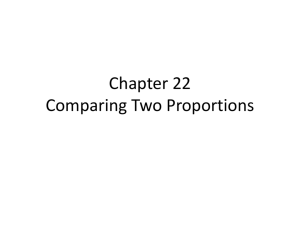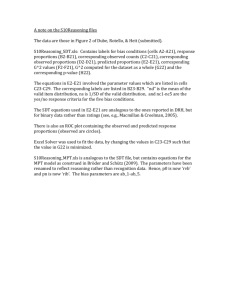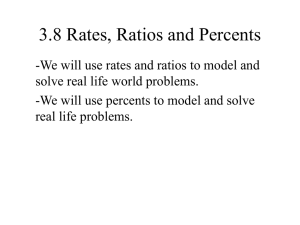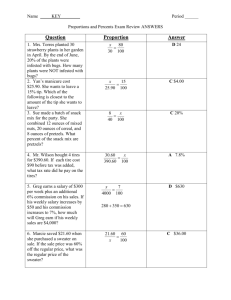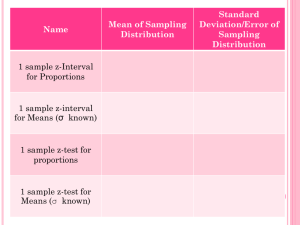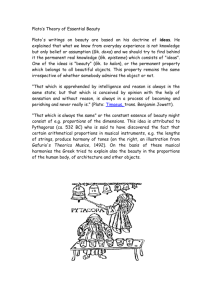The Central Limit Theorem
advertisement
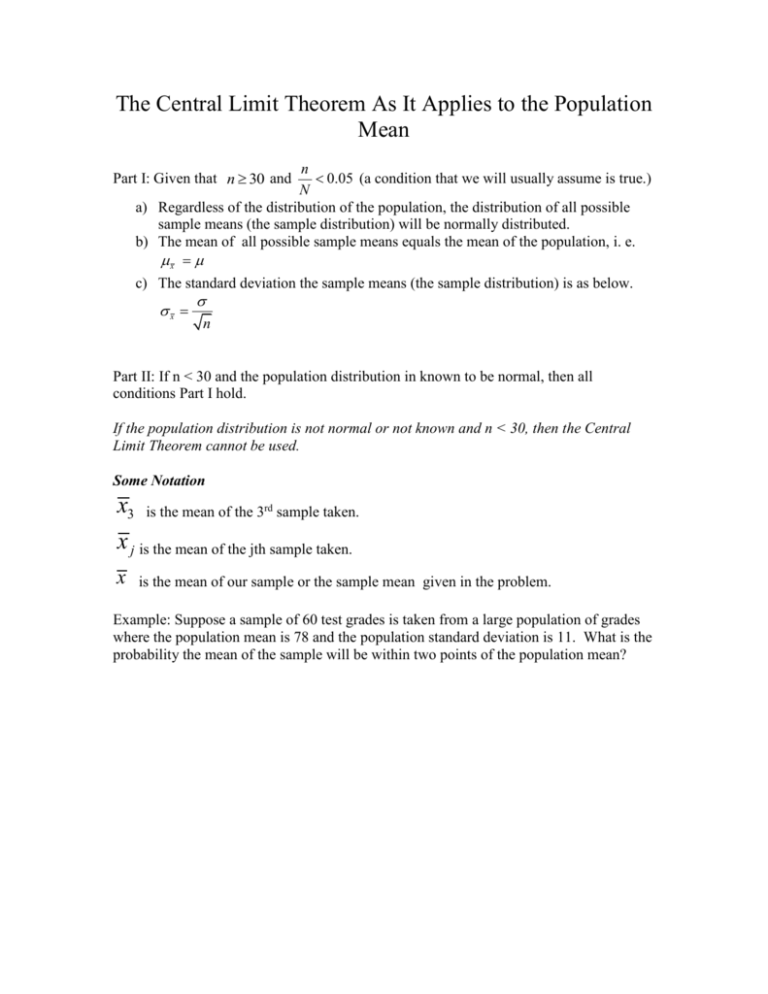
The Central Limit Theorem As It Applies to the Population Mean n 0.05 (a condition that we will usually assume is true.) N a) Regardless of the distribution of the population, the distribution of all possible sample means (the sample distribution) will be normally distributed. b) The mean of all possible sample means equals the mean of the population, i. e. x Part I: Given that n 30 and c) The standard deviation the sample means (the sample distribution) is as below. x n Part II: If n < 30 and the population distribution in known to be normal, then all conditions Part I hold. If the population distribution is not normal or not known and n < 30, then the Central Limit Theorem cannot be used. Some Notation x3 is the mean of the 3rd sample taken. x j is the mean of the jth sample taken. x is the mean of our sample or the sample mean given in the problem. Example: Suppose a sample of 60 test grades is taken from a large population of grades where the population mean is 78 and the population standard deviation is 11. What is the probability the mean of the sample will be within two points of the population mean? The Central Limit Theorem As It Applies to Proportions (Binomial) Notation: the population and sample proportions, denoted by p and p̂ , respectively, are X x pˆ calculated by p and where N n N = total number in the population n = total number in the sample X = number of elements in the population that possess a specific characteristic (success) x = number of elements in the sample that possess a specific characteristic (success) n 0.05 N a) The distribution of all possible sample proportions ( p̂i ) will be normally distributed.. b) The mean of all possible sample proportions p̂i equals the population Given that np>5, nq>5 and proportion, i. e. p̂ p The standard deviation of the distribution of the sample proportions is as below. pˆ pq n Example 1: The number males in Mobile County is 101,378 and the population of the county 234,583. A sample of 110 people is drawn from the population and 52 are males. a) N = b) n = c) X = d) x = e) p = f) q = g) p̂ = h) q̂ = i) will the sample proportions be normally distributed? Example 2: The number of graduate students USA is 3,467 and the total number of students is 13,000. A sample of 35 students is taken, and the number of graduate students is noted. If possible, find a) N = b) n = g) p̂ = h) q̂ = j) P(0.26 pˆ 0.28) c) X = d) x = e) p = f) q = i) will the sample proportions be normally distributed?




